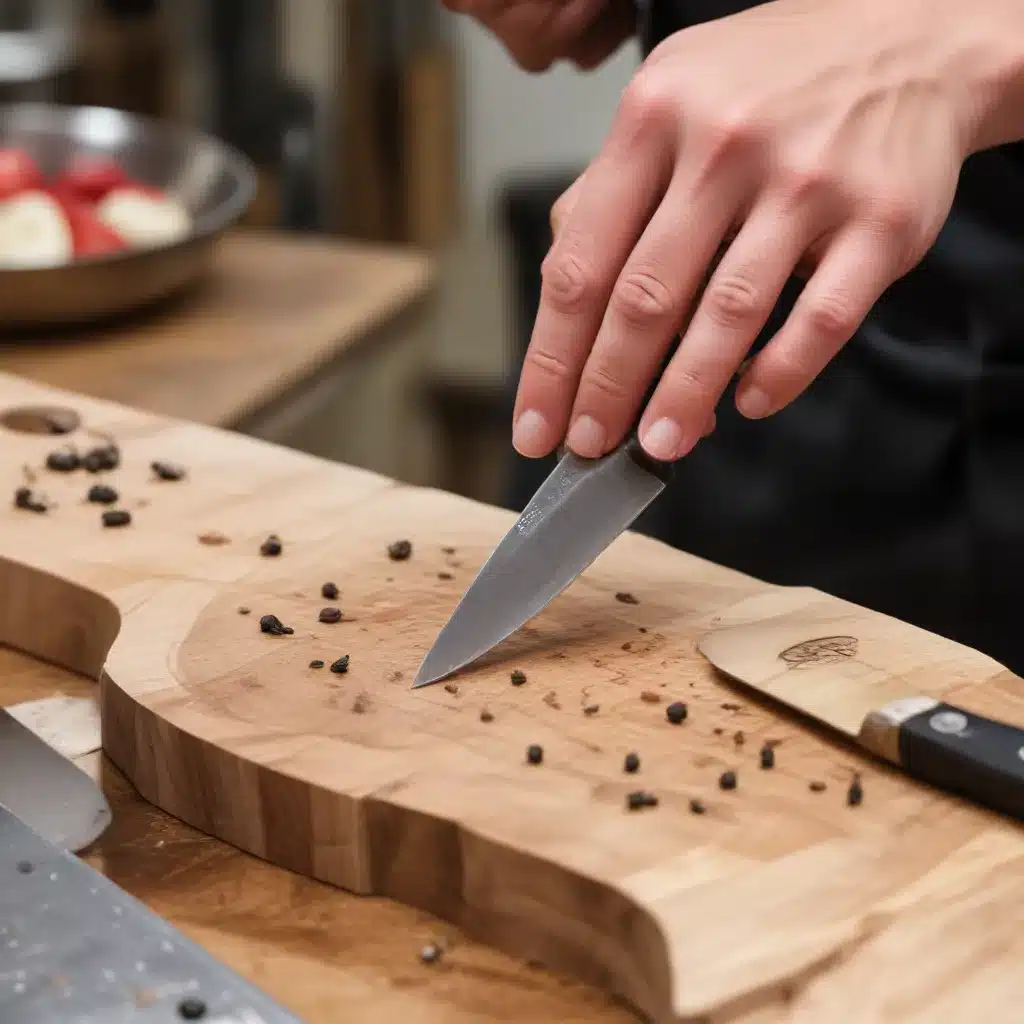
Mastering the Art of Cutting with Confidence
As a seasoned culinary professional, I’ve seen firsthand the transformative power of exceptional knife skills. The ability to handle a knife with speed, precision, and finesse can elevate your cooking experience, boost efficiency in the kitchen, and even inspire awe in your guests. In this comprehensive guide, we’ll delve into the world of knife skills, exploring techniques and strategies to help you improve your cutting prowess and elevate your culinary game.
Understanding the Fundamentals of Knife Handling
Before we dive into the specifics of improving your knife skills, it’s crucial to establish a solid foundation in the basics of knife handling. Proper grip, stance, and blade control are the cornerstones of safe and efficient cutting.
Grip Technique
The way you hold your knife can significantly impact your cutting abilities. The most commonly recommended grip is the pinch grip, where you place your thumb and index finger on either side of the blade, near the bolster (the thick part where the blade meets the handle). This grip provides maximum control and stability, allowing for precise movements.
Stance and Body Positioning
Maintaining a stable, balanced stance is essential for maintaining control and avoiding injuries. Stand with your feet shoulder-width apart, with one foot slightly ahead of the other. Keep your body square to the cutting board, and tuck your non-cutting hand close to your body to protect your fingers.
Blade Control
Mastering blade control is key to achieving both speed and precision. Keep your fingers curled under, with the tips resting on the blade’s spine. This technique, known as the claw grip, helps guide the knife and protects your fingertips from accidental cuts.
Safety First
While honing your knife skills, always prioritize safety. Keep your work area clear of clutter, use a stable cutting board, and be mindful of your surroundings. Sharpen your knives regularly to ensure clean, efficient cuts and reduce the risk of accidents.
Developing Cutting Techniques
Now that you’ve got the fundamentals down, let’s explore some specific cutting techniques that will help you improve your speed and precision.
The Rocking Motion
The rocking motion is a fundamental cutting technique that involves gently rocking the blade back and forth while maintaining a consistent, controlled grip. This motion allows for smooth, uniform cuts, particularly when slicing vegetables or herbs.
The Slice and Slide
For longer cuts, the slice and slide technique can be particularly effective. Start by making a clean, straight slice, then slide the knife back and forth to continue the cut. This method helps maintain a consistent blade angle and produces even, uniform slices.
The Chop
The chop is a versatile technique used for dicing, mincing, and breaking down larger ingredients. Lift the knife and bring it down with a firm, decisive motion, keeping your fingers curled to protect them from the blade.
The Fan Slice
The fan slice is a visually appealing technique often used for ingredients like radishes, cucumbers, or citrus fruits. Start by making a series of parallel slices, then gently fan the slices out to create a beautiful, fan-like display.
The Julienne
The julienne cut involves slicing ingredients into thin, matchstick-like pieces. This technique is commonly used for vegetables like carrots, celery, or zucchini, and can add texture and visual interest to your dishes.
The Brunoise
The brunoise cut takes the julienne one step further, resulting in uniformly diced ingredients. This finely chopped technique is often used for garnishes or to create a consistent texture in sauces and stews.
Practice these cutting techniques regularly, focusing on maintaining proper form and developing muscle memory. Gradually increase your speed as you become more comfortable with each method.
Enhancing Speed and Precision
Improving your knife skills is an ongoing process, and there are several strategies you can employ to boost your speed and precision.
Targeted Practice
Identify areas where you’d like to improve, whether it’s your ability to make consistent slices, your speed in dicing, or your control when mincing. Dedicate focused practice sessions to honing these specific skills.
Muscle Memory Development
Repetition is key to building muscle memory and automatizing your cutting techniques. Set aside time each day to practice your knife skills, gradually increasing the complexity of the cuts as you gain confidence.
Knife Maintenance
Keeping your knives sharp and well-maintained can have a significant impact on your cutting efficiency. Invest in a quality sharpening stone or electric sharpener, and make a habit of honing your blades regularly.
Ergonomic Considerations
Pay attention to your body positioning and the way you hold your knife. Experiment with different grip styles and stances to find the most comfortable and efficient approach for your needs.
Visualization and Mindfulness
Visualization and mindfulness exercises can also be powerful tools in improving your knife skills. Imagine yourself making precise, confident cuts, and focus on your breathing and body awareness during your practice sessions.
Putting It All Together: Knife Skills in the Kitchen
Once you’ve mastered the fundamental cutting techniques and strategies for improving speed and precision, it’s time to put your skills to the test in the kitchen. Utilize your newfound knife prowess to streamline your meal preparation, enhance the presentation of your dishes, and impress your family and friends with your culinary expertise.
Remember, the journey to knife mastery is an ongoing one, filled with opportunities to learn, grow, and refine your abilities. Embrace the process, be patient with yourself, and take pride in the progress you make. With dedication and consistent practice, you’ll soon find yourself slicing, dicing, and julienning with the speed and precision of a seasoned professional.
For more resources and information on elevating your cooking skills, be sure to visit the Kitchen Warrior website. Happy cooking!


